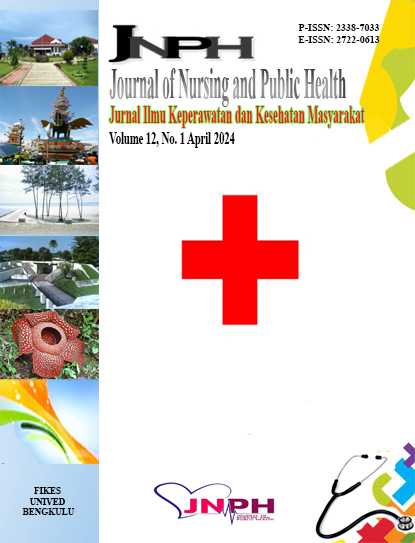PROYEKSI KEBUTUHAN AIR BERSIH PDAM TIRTA HIDAYAH DI KOTA BENGKULU
Abstract
Air merupakan sumber daya yang sangat diharapkan mahluk hidup baik untuk memenuhi kehidupan juga menahan hidupnya secara alami. Penelitian ini bertujuan untuk mengetahui Proyeksi Kebutuhan air bersih PDAM Tirta Hidayah di Kota Bengkulu. Jenis penelitian ini menggunakan penelitian deskriptif kuantitatif yaitu metode untuk menjelaskan data-data yang di dalam penelitian untuk memperoleh kesimpulan.Berdasarkan hasil penelitian jumlah penduduk 2021 adalah 378.604 jiwa, kebutuhan air di Kota Bengkulu adalah 47.325.500 liter/hari atau 47.325,5 m3/hari. Dengan kapasitas produksi 600 liter/detik atau 51.840 m3/hari. Jumlah penduduk 2046 (25 tahun kedepan ) adalah 459.057 jiwa, kebutuhan air di Kota Bengkulu adalah 57.382.125 liter/hari atau 57.382 m3/hari. Dengan kapasitas produksi 730 liter/detik atau 63.072 m3/hari. Perhitungan GAP kebutuhan air bersih yaitu sebesar 11.232 m3/hari.Skema secara umum sesuai dengan hasil perhitungan kapasitas produksi exisiting dan kapasitas produksi dua puluh lima tahun kedepan (2046).Penelitian ini dapat dijadikan masukan pada Instalasi Pengolahan Air (IPA) Air Nelas dan Surabaya didaerah pelayanan PDAM Tirta Hidayah tentang Proyeksi Kebutuhan Air Bersih PDAM agar masyarakat di Kota Bengkulu duapuluh lima tahun kedepan (2046) tercukupi air bersih.
Downloads
References
Afriyanda, R., Mulki, G. Z., & Fitriani, M. I. (2018). Analisis Kebutuhan Air Bersih Domestik di Desa Penjajap Kecamatan Pemangkat Kabupaten Sambas. PWK, Laut, Sipil, Tambang, 6(2), 1–11.
Astani, L. P., Supraba, I., & Jayadi, R. (2021). Analisis Kebutuhan Air Bersih Domestik dan Non Domestik. Jurnal Teknologi Sipil, 5(November), 34–41.
BPS Kota Bengkulu. (2022).. Kota Bengkulu Dalam Angka 2022, 4(1), 88–100.
Bhaskoro, R.G.E., & Ramadhan, T.E. (2018). Evaluasi Kinerja Instalasi Pengolahan Air Minum (Ipam) Karangpilang I Pdam Surya Sembada Kota Surabaya Secara Kuantitatif. JurnalPresipitasi :MediaKomunikasiDanPengembanganTeknik Lingkungan, 15(2), 62.
Margaret, R., Yanti, K., Dewanti, N., Sipil, T., Kalimantan, I. T., Km, J. S.,Joang,K.,Timur,K.,Perencanaan, P., Kalimantan, I. T., Km, J. S., & Timur,K.(2022).ProyeksiKebutuhan Air Bersih Jangka Pendek Dan Menengah Kecamatan Penajam Kabupaten Penajam Paser Utara. 13, 113–124.
Marung,F.,Suryatmaja,I.B.,&Kurniari,K.(2021).ProyeksiKebutuhan Air Bersih Jangka PendekDan Menengah Kecamatan Penajam Kabupaten Penajam Paser Utara. 1(1), 14–19.
Murdianto, D., & Adzkiya, D. (2016). Pemodelan Instalasi Pengolahan Air Bersih Menggunakan Hybrid Petri Net. Proceeding of The 6th AnnualBasic Science International Conference, 1–10.
Nuryadi, Astuti, T. D., Utami, E. S., & Budiantara, M. (2017). Buku Ajar Dasar-dasar Statistik Penelitian.
Peraturan Menteri Kesehatan RI. No. 2 Tahun 2023. Tentang Standar Baku Mutu Kesehatan Lingkungan dan Persyaratan Kesehatan air untuk keperluan Higiene Sanitasi
Putu, N. I., & Suartini, T. (2022). Analisa Kebutuhan Air Bersih Pada Daerah Kek Mandalika Berdasarkan. 183–190.
Sebayang, P., Muljadi, Tetuko, A. P., Kurniawan,C.,Sari,A.Y.,&Nurdiansyah,L.F.(2015).TeknologiPengolahan Air Kotor dan Air Payau Menjadi Air Bersih dan Layak Minum. In Nucl. Phys.(Vol. 13, Issue 1).8

Copyright (c) 2024 VINASA RAMINTIKA, RIANG ADEKO, JUBAIDI JUBAIDI

This work is licensed under a Creative Commons Attribution-ShareAlike 4.0 International License.
An author who publishes in the Journal of Nursing and Public Health agrees to the following terms:
Author retains the copyright and grants the journal the right of first publication of the work simultaneously licensed under the Creative Commons Attribution-ShareAlike 4.0 License that allows others to share the work with an acknowledgement of the work's authorship and initial publication in this journal
Submission of a manuscript implies that the submitted work has not been published before (except as part of a thesis or report, or abstract); that it is not under consideration for publication elsewhere; that its publication has been approved by all co-authors. If and when the manuscript is accepted for publication, the author(s) still hold the copyright and retain publishing rights without restrictions. For the new invention, authors are suggested to manage its patent before published. The license type is CC-BY-SA 4.0.
Journal of Nursing and Public Health is licensed under a Creative Commons Attribution-ShareAlike 4.0 International License.
You are free to:
Share — copy and redistribute the material in any medium or format
Adapt — remix, transform, and build upon the material
for any purpose, even commercially.
The licensor cannot revoke these freedoms as long as you follow the license terms.









